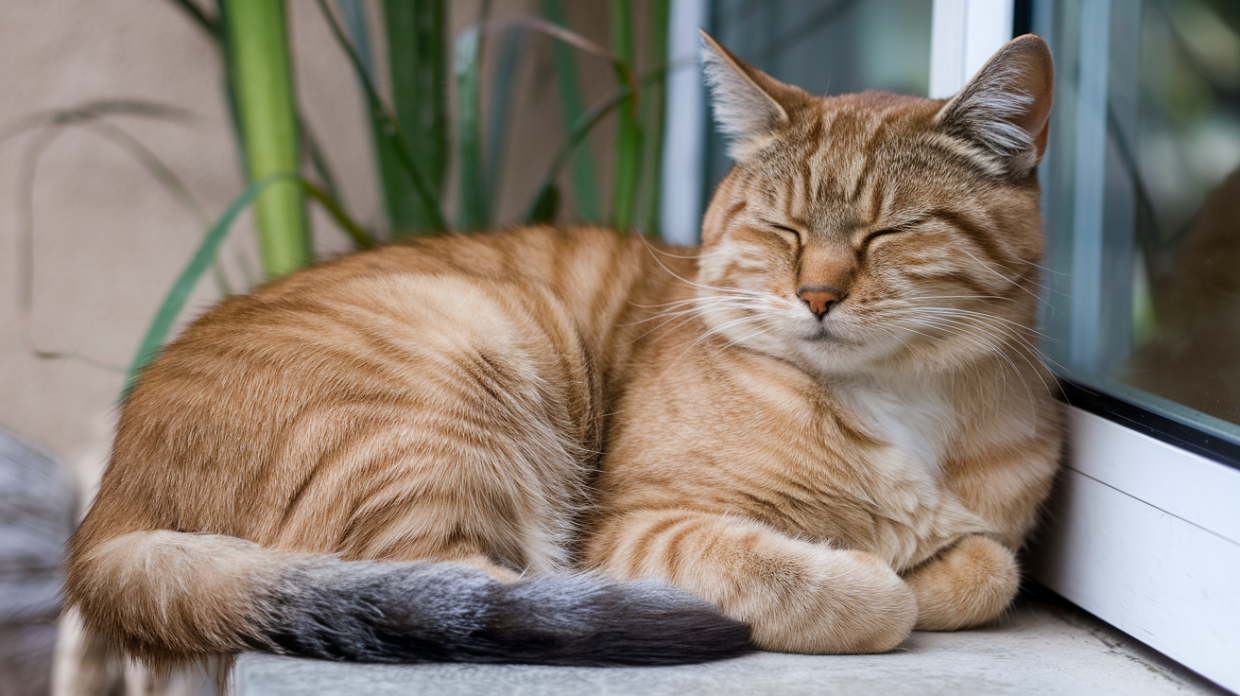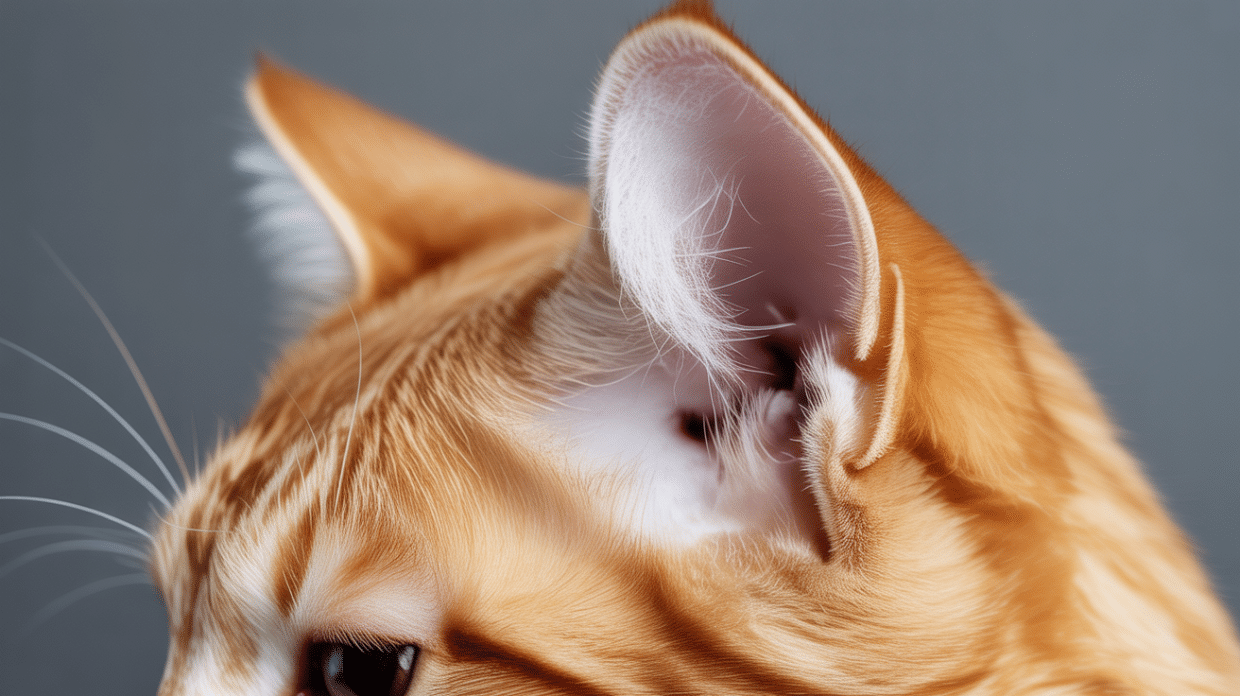A cat’s tail is important for balance, communication, and showing emotions. When it gets injured, it can cause pain and make daily activities harder for your cat.
Recognizing the signs early can help you take action and prevent further harm. In this guide, we’ll explain how to spot a tail injury, what treatments are available, and how you can care for your cat at home.
We’ll also cover when to seek emergency care. With the right knowledge, you can help your cat heal faster and keep them comfortable.
Keep reading to find out how to support your cat through the recovery process.
Can Cats Break Their Tails
Yes, cats can break their tails. A cat’s tail contains vertebrae (small bones) connected by joints and surrounded by muscles, nerves, and blood vessels. These bones can fracture or dislocate when subjected to strong force or pressure.
Cat tail breaks range from minor fractures to severe breaks that might affect nerve function. The location and severity of the break determine how it impacts your cat’s mobility, bathroom habits, and overall comfort.
Most cat tail fractures can heal with proper care, though some severe cases may require amputation. The good news is that many cats adapt well to tail injuries and can live normal, happy lives even after serious damage.
Recognizing Tail Injury Symptoms
Look out for these signs that could mean your cat has hurt their tail:
- Holding the tail in an odd position or angle
- Noticeable bends or kinks in the tail
- Swelling or bleeding
- Fur missing or patchy along the tail
- Your cat hissing or crying when their tail is touched
- Avoiding sitting down
- Changes in bathroom habits or accidents
- Not moving or controlling the tail
- Excessive licking or biting of the tail
- Showing general signs of pain, like hiding, acting aggressive, or losing appetite
If you notice any of these signs, it’s important to check your cat’s tail right away
Causes of Tail Injuries in Cats
A cat’s tail can get injured in many different ways. Some of the most common causes include trauma from car accidents, doors closing on the tail, falls from heights, or fights with other animals.
Children sometimes pull or handle a cat’s tail roughly, which can also lead to injury. Other times, a tail may get caught in objects or even stepped on.
In addition to these accidents, other factors can cause tail issues.
Birth defects affecting the tail’s structure, age-related changes that weaken the bones, and certain infections that weaken the bones are all possible causes.
Nutritional problems, especially those affecting bone health, can also play a role in tail injury. Lastly, conditions that affect the nervous system can impact how the tail functions.
When to See a Veterinarian
If your cat has a tail injury, some signs mean you should see a veterinarian right away. If your cat’s tail is completely paralyzed or it has trouble controlling its bladder or bowels, the condition could be serious.
Open wounds, exposed bone, or heavy bleeding also need urgent care. Changes in color, like very pale, blue, or black skin, can signal a problem with circulation.
A strong smell from the tail might mean an infection. Signs of severe pain, fever, or a loss of appetite for more than a day are also reasons to get help.
Injuries at the base of the tail, where it connects to the body, can be especially concerning. Even if you’re unsure, it’s best to have a vet check your cat. Quick treatment can prevent further problems and ease their discomfort.
Veterinary Diagnosis and Treatment
Diagnosis Methods
Your veterinarian will likely use several approaches to assess your cat’s tail injury, some of which are:
- Physical examination to check movement, pain response, and visible damage
- Neurological tests to check nerve function
- X-rays to identify fractures or dislocations
- Blood tests to rule out other health issues
- Assessment of bladder and bowel control
Treatment Options
| Treatment Type | Purpose | Common Methods |
|---|---|---|
| Pain Management | Reduce discomfort | Prescription pain medications, anti-inflammatories |
| Wound Care | Prevent infection | Cleaning, antibiotics, and bandaging when appropriate |
| Immobilization | Support healing | Splints, bandages (rarely used for tails) |
| Surgery | Fix severe damage | Repair of complex fractures, nerve damage |
| Amputation | Remove damaged section | Partial or complete tail removal when necessary |
| Physical Therapy | Restore function | Gentle exercises, massage, stimulation techniques |
The Recovery Process
Recovery from a tail injury can vary depending on the severity of the damage. For minor injuries, most cats heal within 2-3 weeks.
During this time, your cat may need to wear a cone to prevent licking and will likely require limited activity. Regular follow-up vet visits will help track the healing progress.
For more serious injuries, recovery can take 6-8 weeks or even longer. Managing pain is important, and you’ll also need to monitor your cat’s bathroom function to ensure everything is working properly.
Physical therapy may be needed to help restore mobility, and making changes to your cat’s environment can provide more comfort.
Throughout the recovery period, look for signs of complications such as infection, loss of bladder control, or signs that the injury isn’t healing as expected.
Managing Your Cat’s Health After a Tail Injury
Caring for a recovering cat requires a quiet, comfortable space and a regular feeding and medication schedule. The cat should be checked daily, the injury site cleaned if advised, and the cat should wear an e-collar.
Monitor litter box use to ensure normal bladder and bowel function. Tail injuries can affect urination and defecation. Keep the litter box accessible, clean any accidents, and use waterproof bedding. If problems persist, talk to your vet.
For pain relief, follow medication schedules, provide a warm resting area, and minimize jumping. A low-heat bed and gentle petting (away from the injury) can help. Ask your vet about supplements if needed.
When Is Tail Amputation Necessary?
Sometimes, removing part or all of a cat’s tail is the best option for their health and comfort.
If amputation is needed, it’s usually because the affected area can’t heal or function properly. This can happen after a severe crushing injury that causes too much damage to the tissue.
In some cases, bones break in multiple places and won’t heal the way they should. If the tissue in the area dies, a condition called necrosis can spread and lead to further complications.
Loss of nerve function can also be a sign, especially if it leads to complete paralysis. Chronic pain that doesn’t get better with medication may be another reason.
Some people also experience repeated infections in the injured area, which can be dangerous over time. In rare cases, cancer or tumors may affect the limb, making removal the safest option.
If you or someone you know is facing this situation, talking to a doctor can help you understand the best course of action.
Benefits:
- Removes source of pain and infection
- Can improve quality of life
- Often leads to quicker recovery than trying to save a badly damaged tail
- Many cats adapt very well to having a shorter tail or no tail
Challenges:
- Minor balance adjustments are needed
- Possible temporary confusion with body awareness
- Some cats may experience phantom sensations
- Slight changes in communication with other cats
The good news is that cats are remarkably adaptable. Most adjust to tail amputation within a few weeks and go on to live normal, happy lives.
Precautions to Prevent Tail Injuries
Creating a safe environment for your cat is important, especially if they like to follow you around the house.
- Be mindful when closing doors to avoid accidental injuries.
- Build a secure outdoor space, like a catio, if your cat enjoys being outside.
- Keep toilet lids closed to prevent their tails from getting caught.
- Be cautious with furniture like rocking chairs and recliners that can be dangerous for small pets.
- Teach children how to handle and pet cats gently and supervise interactions.
- Create quiet areas or use baby gates to give your cat a safe, calm space to retreat.
Conclusion
Your cat’s tail is essential for balance and communication, so an injury to it can significantly affect its daily life. Recognizing the symptoms early and providing proper care can help with a quicker recovery.
While some injuries may require surgery or amputation, many cats adapt well and continue to live happily. Creating a safe environment and keeping a close eye on your cat’s health can prevent future injuries.
Trust your instincts and consult a vet if something seems wrong.
For more helpful tips on caring for your cat, check out our other blogs for similar content, and keep your feline friend happy and healthy!








